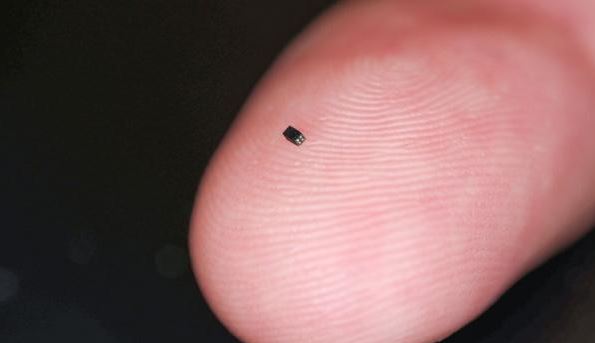In a remarkable leap forward for imaging technology, OmniVision has unveiled the OV6948, officially the world’s smallest commercially available image sensor. Measuring just 0.575 x 0.575 x 0.232mm, this microscopic marvel is smaller than a grain of sand, yet it packs a powerful punch, redefining what’s possible in miniature tech.
The OV6948 is engineered to capture 40,000-pixel color images, leveraging an advanced RGB Bayer back-side-illuminating chip. This design ensures vibrant, high-quality visuals despite the sensor’s tiny footprint. Its diminutive size and impressive capabilities make it a game-changer for industries requiring compact yet effective imaging solutions.
Originally developed with medical applications in mind, the OV6948 is ideal for endoscopic procedures, dental imaging, and other minimally invasive diagnostics where space is at a premium. Beyond healthcare, its potential extends to wearables, robotics, and even IoT devices, offering engineers a versatile tool for innovation.
OmniVision’s breakthrough highlights the rapid evolution of sensor technology, blending cutting-edge performance with unprecedented miniaturization. The back-side-illumination enhances light sensitivity, ensuring clear images even in low-light conditions—a critical feature for its intended uses.
As demand grows for smaller, smarter devices, the OV6948 sets a new standard, proving that size doesn’t dictate capability. Industry experts predict this tiny sensor will inspire a wave of creativity, enabling designers to rethink how imaging integrates into everyday life. Stay tuned as this pint-sized powerhouse continues to reshape the future of technology, one pixel at a time.
Key Points:
Smallest Sensor: The OmniVision OV6948 is the world’s smallest commercially available image sensor, measuring just 0.575 x 0.575 x 0.232mm.
Imaging Capability: It captures 40,000-pixel color images using an RGB Bayer back-side-illuminating chip.
High Quality: Despite its size, the sensor delivers vibrant, clear images, enhanced by back-side illumination for better light sensitivity.
Applications: Designed for medical uses like endoscopy and dental imaging, with potential in wearables, robotics, and IoT devices.
Innovation: Represents a breakthrough in miniaturization, blending performance with an ultra-compact design.
Impact: Sets a new standard for small, smart devices, likely inspiring advancements across industries.



